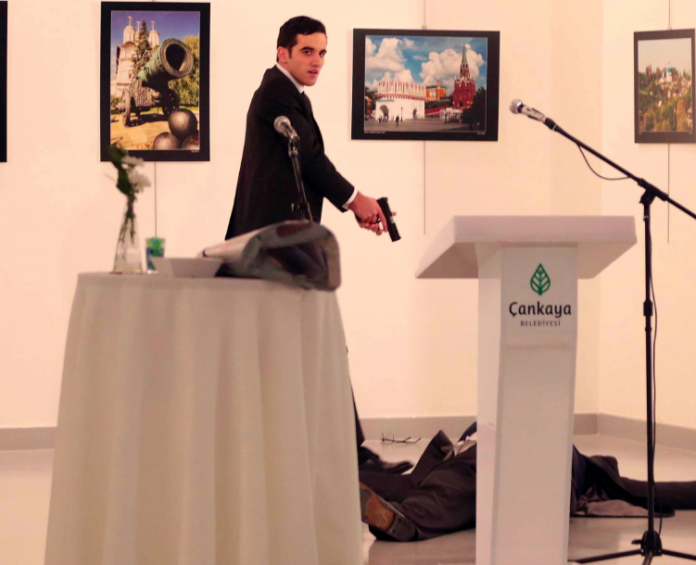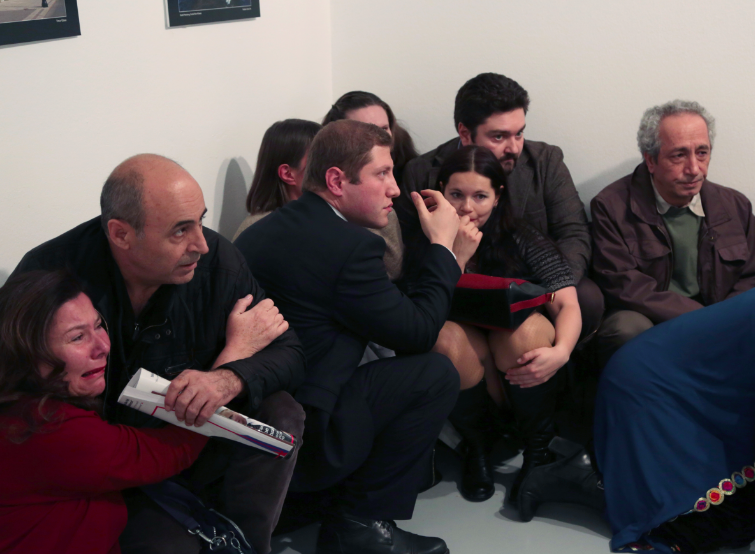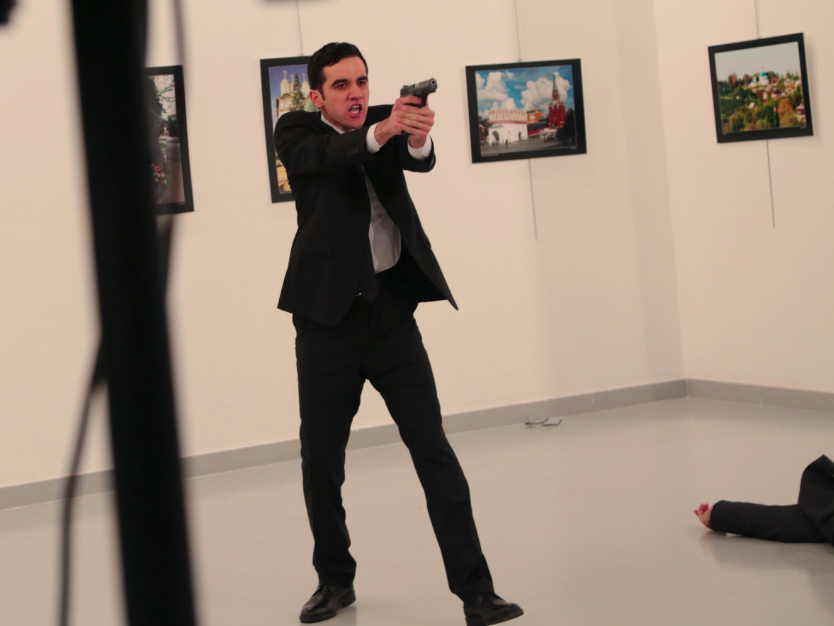
Burhan Ozbilici, an Associated Press photographer, captured on Monday the immediate aftermath of the assassination of Andrei Karlov, Russia’s ambassador to Turkey, at an art exhibition in Ankara. The highly graphic images are shocking, and they’re also part of a long tradition of photography that brings the horror of violence and terrorism to those of us far from the lines of battle.
But just because Ozbilici’s photos of the attack are powerful doesn’t mean that we’ll be able to protect their impact. Photos like this one sometimes have their greatest effect years after they are taken, clarifying our historical memory of important events rather than leading us toward a future course of action.
Ozbilici’s pictures, jarring and upsetting though they are, come at a moment when the perpetrators of even more grotesque violence are broadcasting their acts online. You don’t have to look very far to find deaths by burning and beheading that are available online, not because intrepid journalists captured outrageous acts, but because the perpetrators felt pride in those deeds and wanted the world to see them. In this environment, an image like the ones Ozbilici took, doesn’t stun us because it shows us something new; instead, it’s unnerving because of the emotion it captures, the arrogance and rage of the gunman.
—
We haven’t always had the same immediate access to the violence of terrorism and wartime. In 1968, Associated Press photographer Eddie Adams took a photograph at the moment that South Vietnamese police commander Nguyen Ngoc Loan pulled his gun and summarily executed Nguyen Van Lem, a member of the insurgent National Liberation Front. The resulting picture became one of the defining images of the Vietnam War, though Adams didn’t know it at the moment.
“I thought absolutely nothing of it. Went back to the AP office and I dropped it off. I said ‘I think I got some guy shooting somebody.’ I went to lunch. So what. It was a war,” Adams explained later. “I’m serious. That’s how I felt. I had seen so many people die at that point in my life. It’s not nice, but he shot him. He was a prisoner, he shot him. I might have done the same thing. It wasn’t until about a day later when we start getting reports back about what was going on with the picture. I had no idea of the impact. And I still don’t understand it, even today.”
Defining the cruelty of war isn’t the same as changing its course. As Robert Thomas Jr. wrote 30 years later in Loan’s New York Times obituary, “For all the emotional impact, the episode had little immediate influence on on the tide of American involvement in the war, which continued seven years longer, until the evacuation of Saigon in 1975. Indeed, it was four years after the execution that another indelible image of the war created a new round of revulsion, the sight of a screaming 9-year-old as she ran naked along a road after having been burned in a South Vietnamese napalm attack.” Loan ultimately settled in the United States, though the execution was never quite forgotten.
—
To go even further back, Matthew Brady’s photographs of the Civil War dead were and remain horrifying. But though they help define the carnage of the Civil War for modern observers, as Drew Gilpin Faust points out in “This Republic of Suffering,” her book on the rituals of death that developed during the conflict, “It is important to recognize how few Americans would actually have seen Brady’s or other photographs of the dead. Newspapers and periodicals could not yet reproduce photographs but could publish only engravings derived from them.”
And even those who did see Brady’s work, or who encountered the carnage of the war in other ways, didn’t respond in uniform ways, and their reactions weren’t limited to questions about whether the conflict should proceed, or on which terms the war should be waged. Instead, as Faust writes, “As they faced horrors that forced them to question their ability to cope, their commitment to the war, even their faith in a righteous God, soldiers and civilians alike struggled to retain their most cherished beliefs, to make them work in the dramatically altered world that war had introduced.” They worked out these crises in ways ranging from developing identification systems for soldiers, to creating narratives about what constituted a good battlefield death, to founding national cemeteries.
Images such as Brady’s, or Adams’, or now Ozbilici’s, aren’t less powerful because they fail to stop wars. Instead, they are so powerfully jarring that they force us to rethink more than any single conflict.
Featured Image: AP
(c) 2016, The Washington Post



